Happy November! This is not an essay about the upcoming election, but it is a personal essay about how art, beauty, and our tastes can tell us something about how we change and grow and how the Lord delights in the small wonders as well as the big. You may still find it applicable to the election, in a strange way. I hope you do. :)
As some of you know, I am an artist by trade and an art historian by education, which means I’m often thinking about how the history and the practice of art speak to each other. Lately, I’m seeing it in the concept of personal growth and change.
One of the key aspects of art history is context – the historical, cultural, religious, or other circumstantial aspects of the artist’s life that may have shaped the subject matter, colors, or textures of their artwork. Artists never create in a vacuum – the art historians know – and artists’ work can change drastically over the course of their lives, shaped by all sorts of circumstances.
For example, below are four paintings all by the same painter: Pablo Picasso. The artist went through so many stylistic changes throughout his art career that art historians group them into periods: the early period, the blue period, the rose period, and the cubist period are pictured below.
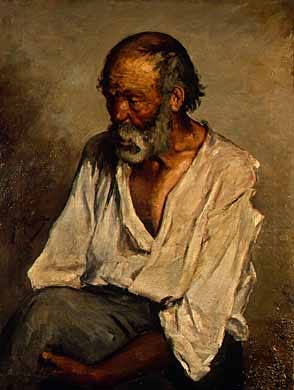

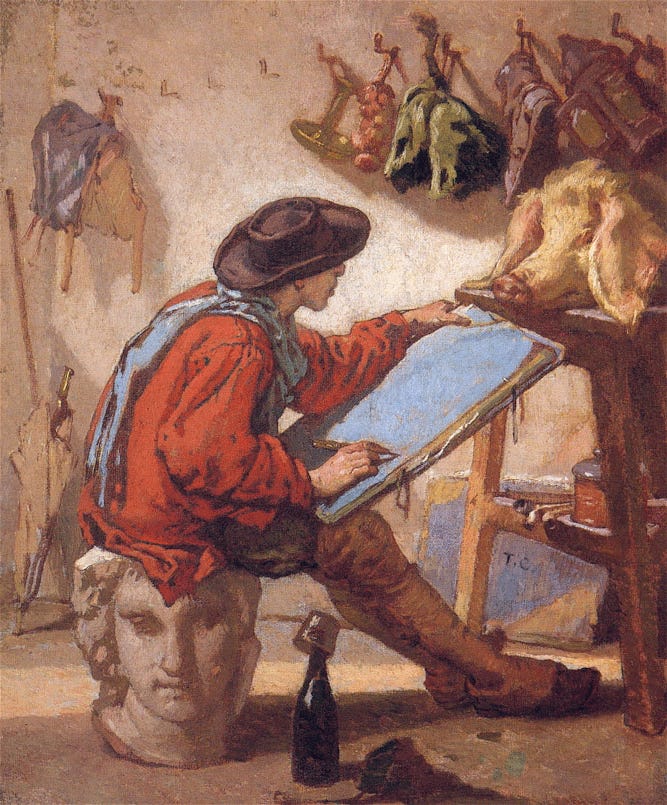
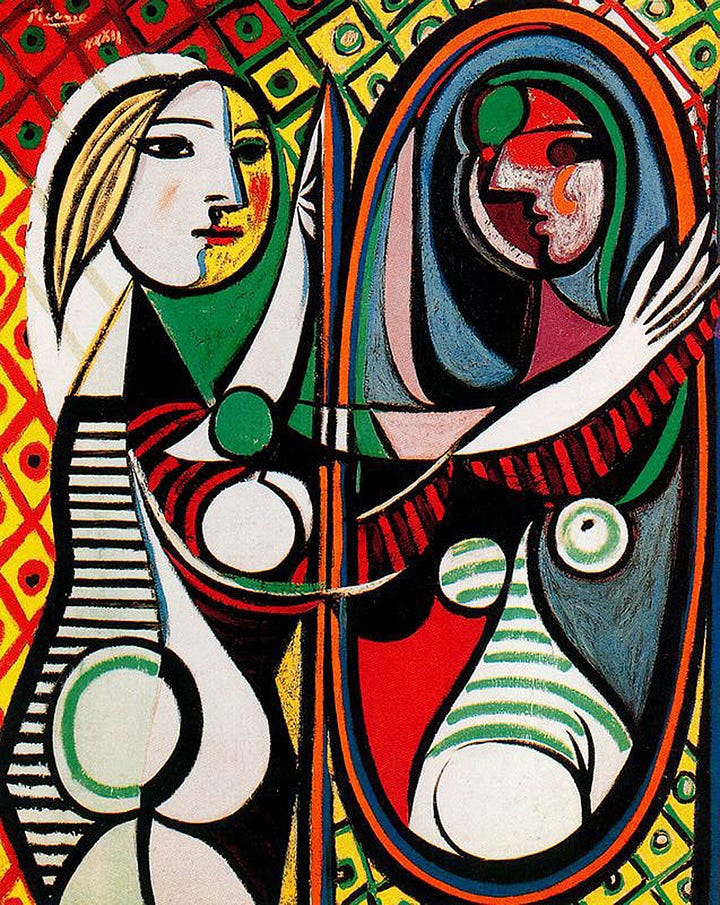
I won’t go into all the details here, but a brief Google search of any of these periods of Picasso will reveal what was going on in his personal life and the world around him, and the reader will see how much his life and personal growth affected the way that he made art.
Though Picasso is a rather dramatic example, I think any artist can turn a historical lens onto their own artwork and see the changes over time. In doing this as a personal exercise, I can notice how my painting practice has shifted. I always hope to be improving as an artist, but there are other changes to detect as well: the choices I make in what to paint and how I’m painting it.
If you’re an artist, and even if you aren’t an artist, I think this is an important exercise for looking within and taking a pulse on your inner life – be it spiritual, emotional, vocational. I encourage you to ask yourself these questions: how have my works – or my opinions/tastes/desires – changed over the past few years? What has shaped those tastes or thought processes? What are the artifacts of my life that display this inner change? If I was to choose one adjective for the way that I have changed, what would it be (more/less ___)?
If you’d like to leave a comment with your thoughts in response to these questions, I’d love to see.
Here’s how I have been thinking about this. Something I’ve been mulling over for the past few years is “the art of the commonplace” – or, the idea that the commonality of a thing doesn’t necessarily diminish its splendor.1 I’ve been stuck on it ever since undergrad, when I read this passage out of G. K. Chesterton’s Orthodoxy, a chapter called “The Ethics of Elf-Land”:
The sun rises every morning. I do not rise every morning; but the variation is due not to my activity, but to my inaction. Now, to put the matter in a popular phrase, it might be true that the sun rises regularly because he never gets tired of rising. His routine might be due, not to a lifelessness, but to a rush of life.
The thing I mean can be seen, for instance, in children, when they find some game or joke that they specially enjoy. A child kicks his legs rhythmically through excess, not absence, of life. Because children have abounding vitality, because they are in spirit fierce and free, therefore they want things repeated and unchanged. They always say, “Do it again”; and the grown-up person does it again until he is nearly dead. For grown-up people are not strong enough to exult in monotony.
But perhaps God is strong enough to exult in monotony. It is possible that God says every morning, “Do it again” to the sun; and every evening, “Do it again” to the moon. It may not be automatic necessity that makes all daisies alike; it may be that God makes every daisy separately, but has never got tired of making them. It may be that He has the eternal appetite of infancy; for we have sinned and grown old, and our Father is younger than we.2
Chesterton uses myth to describe God’s character as not tired of creation, bringing the sun up again every morning for the sheer delight of it. That breathes new life into verses about the love of God, like “But you, Lord, are a compassionate and gracious God, slow to anger, abounding in love and faithfulness.”3 If God is not tired of rising the sun each day, perhaps God is also not tired of us and our lifelong struggles with loving God the way we ought.
I want to become someone who is “strong enough to exult in monotony.” My tastes are naturally bent towards faraway places and spectacular adventures, but I think for me, there is a call to grow into a deeper sense of gratitude and glory in everyday life, to understand the Creator in a deeper way.
These days, I think I still have a real hunger for the spectacular, but I think I’m slightly softer now than I was ten years ago, or at least more aware of my sharp edges and questioning them more often. I hope to grow softer – into greater gentleness, kindness, and peace.
The things I choose to paint seem softer too, more ordinary, sights I see month-to-month or year-to-year instead of once in a lifetime. My first collection of landscapes was called Foundspring, and chronicled many places that I visited briefly on a spring break trip while I was studying abroad in Europe: a scene from a single day in Cambridge, less than 24 hours in Milan, the classic view of the Piazzale Michelangelo in Florence, and so forth. Most of the views I chose to paint were iconic in one way or another, reflective of the fly-by sort of tourism I was undertaking on that trip. (You can look at the whole collection here.)
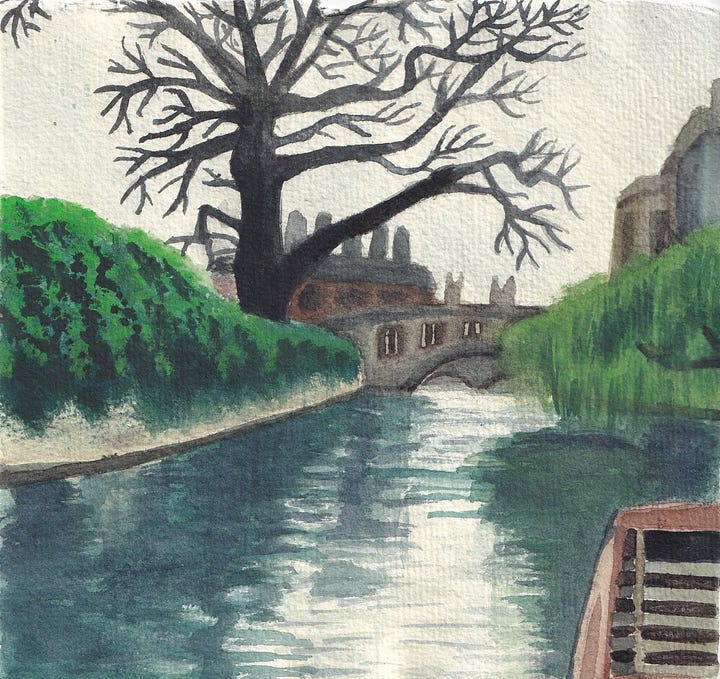
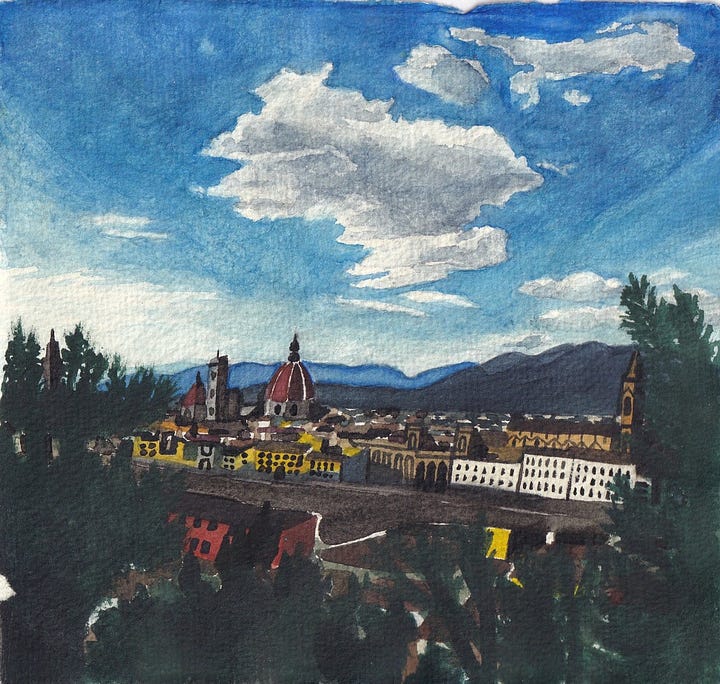
Comparing that first collection to my forthcoming Wanderlands collection, I see worlds of difference in the subject matter I’ve chosen and why. I love that first collection in its own way, and what it says: that you don’t need to be somewhere for long to have an encounter with Beauty there.
But this second collection is largely based on landscapes that I’ve had a chance to sit with for much longer stretches of time, like sunsets over Lake Michigan that I witness each year from the exact same place, or a perfect moment of golden-hour light in the trees captured on the drive to my in-laws’ house out in the country. They are commonplace, slow, ordinary, soft, and nostalgic – and, at the same time, shot through with wonder and meaning. I’m offering them to you in the hopes that they encourage you to embrace the gift of beauty that is always being offered to us right here in our ordinary days.
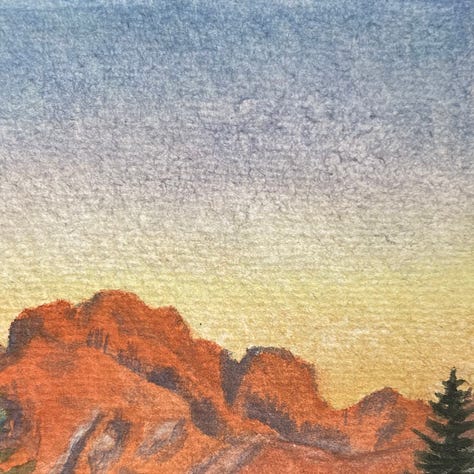
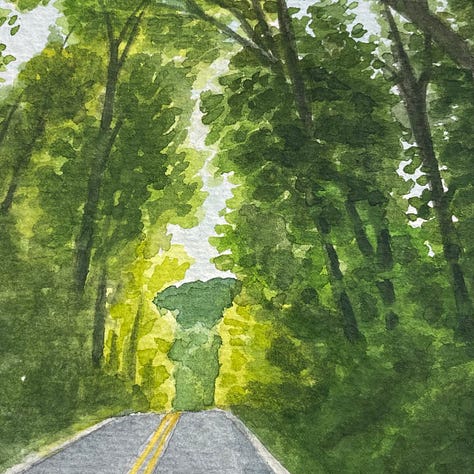
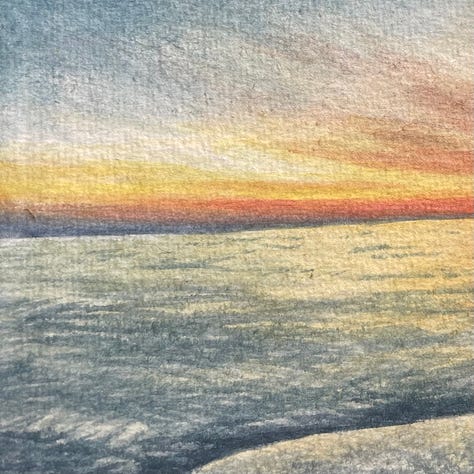
I’m looking forward to sharing these eight original pieces with you soon here on Substack. In my previous art letter I said I would release the paintings today, November 4th, but I’ve been recovering from being sick this past week and want to spend a little more time ensuring that each piece is perfect. So, I’ll be releasing the Wanderlands collection on Friday, November 15th at 10am EST. You can follow along on Instagram for sneak peeks of the landscapes and the creative process!
Take care of yourselves, friends, and grow towards gentleness.
Ellie
I’m borrowing this phrase from Wendell Berry’s book of the same title, where he explores this concept too, but through a more agrarian lens.
G. K. Chesterton, Orthodoxy, 1908. Read the whole chapter here.
Psalm 86:15





YESSSssss to all of this.
I have been listening to "The Road Home" by Stephen Paulus over and over again today -- do give it a listen on Spotify -- the Stephen Paulus, Conspirare, Craig Hella Johnson version, specifically -- this lyric has stayed with me:
"There is no such beauty
As where you belong"
May we always notice the splendor and the beauty.